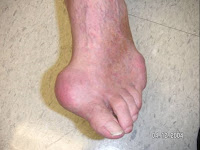ZIKA VIRUS : 4 LAKHS PEOPLE AFFECTED
 Zika virus: is a member of the Flaviviridae virus family and the Flavivirus genus.
Zika virus: is a member of the Flaviviridae virus family and the Flavivirus genus.
Zika virus is spread to people through mosquito bites.
The illness is usually mild with symptoms lasting from several days to a week.
A mother already infected with Zika virus near the time of delivery can pass on the virus to her newborn around the time of birth, but this is rare. This leads to microcephaly.
What is microcephaly?
Microcephaly is condition where a baby’s head is much smaller than expected. During pregnancy, a baby’s head grows because the baby’s brain grows. Microcephaly can occur because a baby’s brain has not developed properly during pregnancy or has stopped growing after birth, which results in a smaller head size. Microcephaly can be an isolated condition, meaning that it can occur with no other major birth defects, or it can occur in combination with other major birth defects.
Other Problems
Babies with microcephaly can have a range of other problems, depending on how severe their microcephaly is. Microcephaly has been linked with the following problems:
- Seizures
- Developmental delay, such as problems with speech or other developmental milestones (like sitting, standing, and walking)
- Intellectual disability (decreased ability to learn and function in daily life)
- Problems with movement and balance
- Feeding problems, such as difficulty swallowing
- Hearing loss
- Vision problems
These problems can range from mild to severe and are often lifelong. In some cases, these problems can be life-threatening. Because it is difficult to predict at birth what problems a baby will have from microcephaly, babies with microcephaly often need close follow-up through regular check-ups with a healthcare provider to monitor their growth and development.
Diagnosis
Microcephaly can be diagnosed during pregnancy or after the baby is born.
During Pregnancy
During pregnancy, microcephaly can sometimes be diagnosed during an ultrasound (which creates pictures of the body). To see microcephaly during pregnancy, the ultrasound test should be done late in the 2nd trimester or early in the third trimester. For more information about screening and confirmatory tests during pregnancy, visit CDC’s birth defects diagnosis web page.
After the Baby is Born
To diagnose microcephaly after birth, a healthcare provider will measure the distance around a newborn baby’s head, also called the head circumference, during a physical exam. The provider then compares this measurement to population standards by sex and age. Head circumference charts for newborns, infants, and children up to age 20 years in the United States can be found on CDC’s growth charts website. CDC recommends that health care providers use the WHO growth charts to monitor growth for infants and children ages 0 to 2 years of age in the U.S.
Often, healthcare providers should take the head circumference measurement when the newborn baby is at least 24 hours old. This helps make sure that compression due to delivery through the birth canal has resolved. If the healthcare provider suspects the baby has microcephaly, he or she can request one or more tests to help confirm the diagnosis. For example, special tests like a CT scan or an MRI can provide critical information on the structure of the baby’s brain that can help determine if the newborn baby had an infection during pregnancy. They also can help the healthcare provider look for other problems that might be present.
Treatments
Microcephaly is a lifelong condition. There is no known cure or standard treatment for microcephaly. Because microcephaly can range from mild to severe, treatment options can range as well. Babies with mild microcephaly often don’t experience any other problems besides small head size. These babies will need routine check-ups to monitor their growth and development.
For more severe microcephaly, babies will need care and treatment focused on managing their other health problems (mentioned above). Developmental services early in life will often help babies with microcephaly to improve and maximize their physical and intellectual abilities. These services, known asearly intervention, can include speech, occupational, and physical therapies. Sometimes medications also are needed to treat seizures or other symptoms.






I was diagnosed as HEPATITIS B carrier in 2013 with fibrosis of the
ReplyDeleteliver already present. I started on antiviral medications which
reduced the viral load initially. After a couple of years the virus
became resistant. I started on HEPATITIS B Herbal treatment from
ULTIMATE LIFE CLINIC (www.ultimatelifeclinic.com) in March, 2020. Their
treatment totally reversed the virus. I did another blood test after
the 6 months long treatment and tested negative to the virus. Amazing
treatment! This treatment is a breakthrough for all HBV carriers.